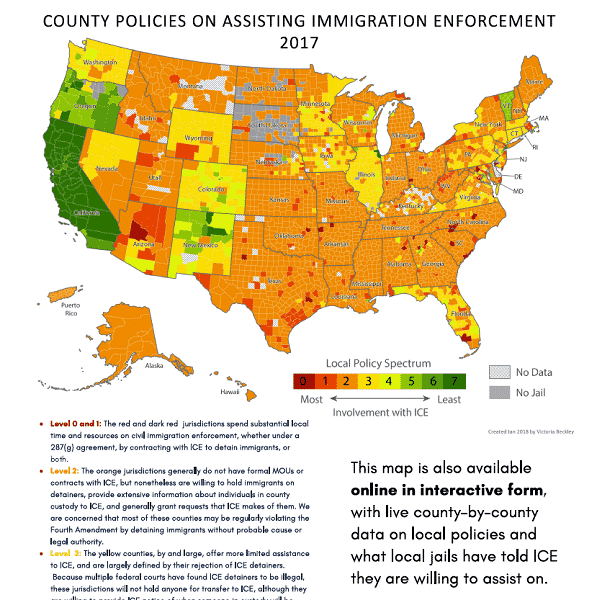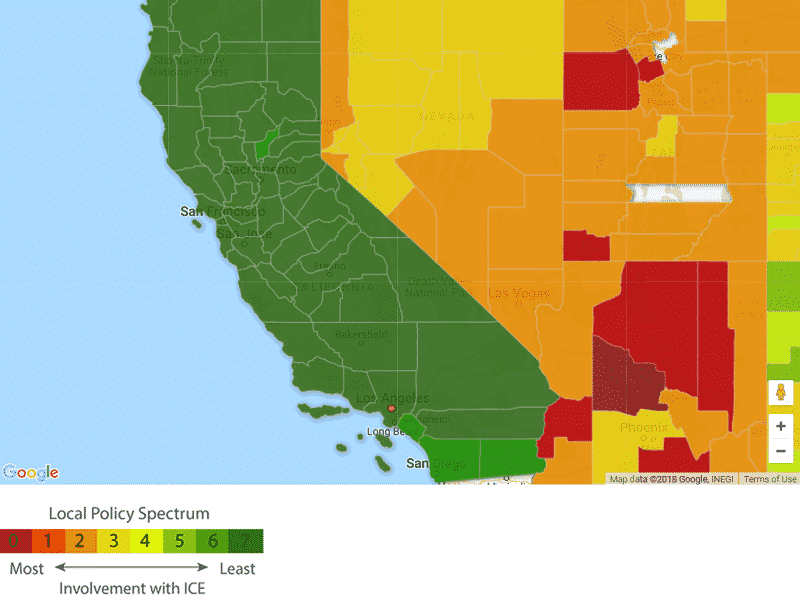Why California is Called Immigrant-friendly
While the passing of new year’s reminds us of resolutions and letting go of the past, for Californian immigrants, 2018 marked a new era. The Sanctuary State bill passed in October of 2017 came into effect January 1, 2018, making California the first sanctuary state ever.
But hold on, what does it mean for California to be a “sanctuary state”?
California Values Act SB54
The senate bill limits local and state law enforcement agencies from sharing information with federal agencies, such as ICE.
Whereas in a non-sanctuary state, law enforcement officers can hold a detainee until ICE picks them up, even if they have not been charged. In California, law enforcement cannot hold a detainee, but they can transfer the detainee to a detention center if the detainee is convicted of one or more of about 800 crimes or is a registered sex offender.
The list of 800 or so crimes include assault, battery, sexual abuse and exploitation, rape, crimes endangering children, burglary, robbery, theft, fraud, forgery, a crime resulting in death, gang/drug/weapon-related offenses, and even some domestic violence offenses and driving under the influence (DUI) felony convictions. These provisions are from the TRUST Act), where the conviction requirement only stands if the crime was committed (or charged) within 15 years.
In California, law enforcement (e.g., the police) cannot ask someone about their immigration status. Immigrants who admit to being illegal can also not be arrested just for their immigration status. It’s important to note that while the police cannot arrest someone for their immigration status, ICE officers can.
However, law enforcement can still respond to ICE requests if the detainee has been convicted or charged with a crime in the list.
ICE can also assist local law enforcement in cases where the primary goal is not immigration enforcement.
Hospitals, schools, and courthouses in California are not required to share information with ICE.
Why does bill SB54 matter?
California has about 2.3 million illegal immigrants. 27% of Californians are foreign-born, and roughly every 5th green card is issued to a California resident. SB-54 bill states three primary reasons why the bill is important for California:
- “Immigrants are an Essential Part of California”
- One in four Californians are immigrants
- 50% of Californian children have at least one immigrant parent
- The cost of mass deportations would be too high for our families and communities.
- “Entangling Local Law Enforcement Agencies with Immigration Enforcement is Harmful”
- Prior to TRUST Act (2013), California spent a lot of local resources assisting ICE in detaining illegals e.g., in 2012 California spent $65 million tax payer money to help ICE detail people.
- Studies show that when illegals are afraid of local law enforcement, they do not report crimes or assist in providing information or acting as witnesses.
- “California’s Resources Cannot be Commandeered to Carry Out Deportations”
- Federal law states that California cannot be required to use local resources to detain and deport illegal residents.
How does California compare to other states?
The Immigrant Legal Resource Center (ILRC) published a report stating facts on today’s state of immigration policies:
- Department of Homeland Security (DHS) has a budget of over $18 billion.
- DHS relies on voluntary help from local governments, especially local law enforcement agencies.
- Local law enforcement agencies have no legal authority to enforce immigration laws.
- Local law enforcement agencies do not have to assist DHS with immigration enforcement.
- However, one in four counties will voluntary detain immigrants at ICE’s request.
- Compared to one year ago, over 400 counties have stronger limitations on immigration enforcement.
- Some counties have a signed agreement of cooperation with ICE (287(g)).
ILRC has created a color-coded map of the U.S. showing counties by the level of ICE-cooperation.
The greener the county, the more policies it has in place against helping ICE detain and deport illegal immigrants. From this map, we can see that California is by far the greenest state, making it th
ILRC reminds readers that just because policies are in place, doesn’t mean cities and local authorities agree on the policies. In Orange County, the city of Los Alamitos approves its precedent-setting anti-sanctuary ordinance, whereby the city voted not to follow California’s sanctuary policies. Another example is how the city of Los Angeles may adhere to sanctuary policies, but the smaller cities in Los Angeles county or other counties may not.
To view the interactive map and find your county, visit the Immigrant Legal Resource Center website.
Why do you think California is immigrant friendly? Share your reasons below!



